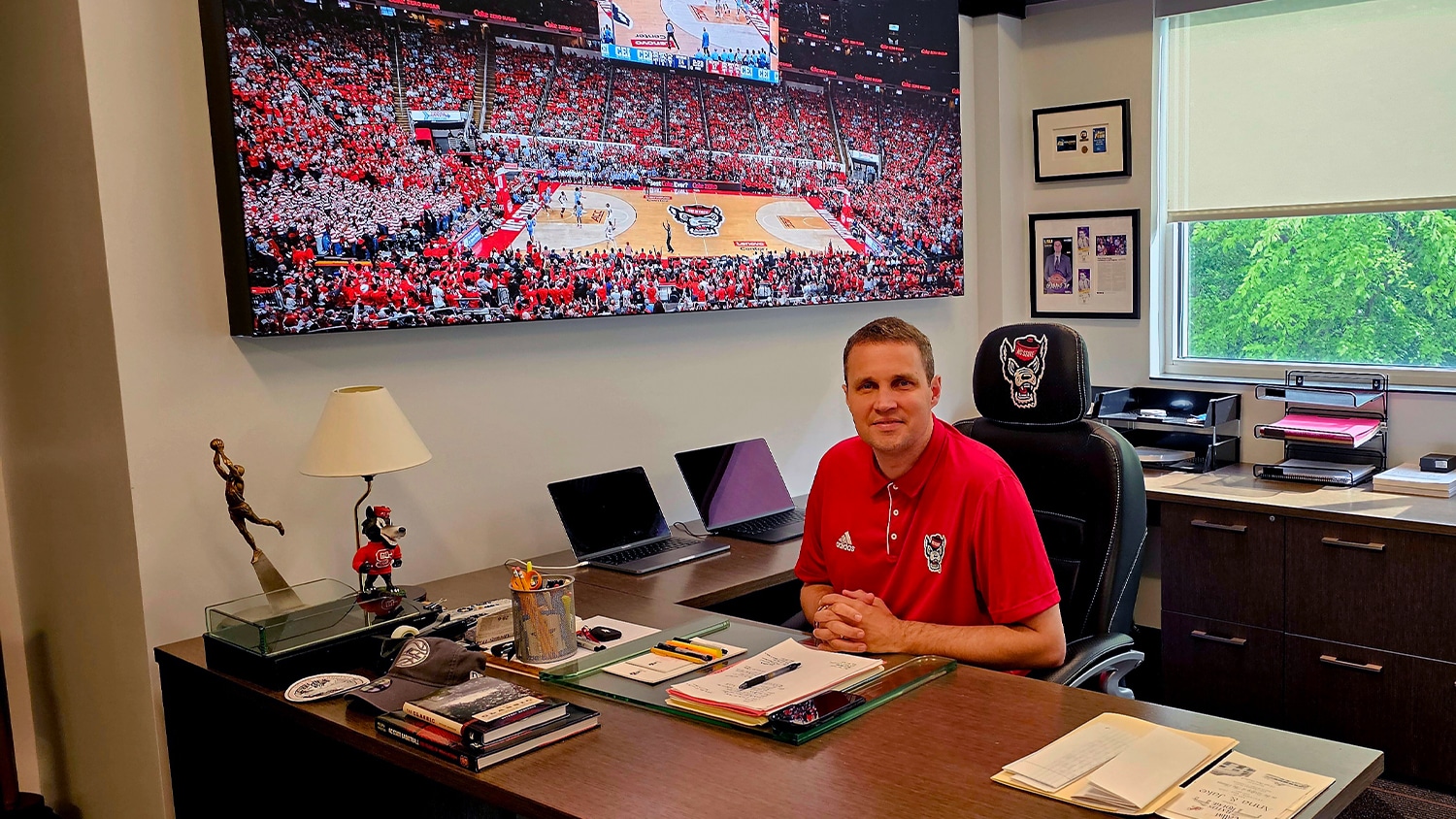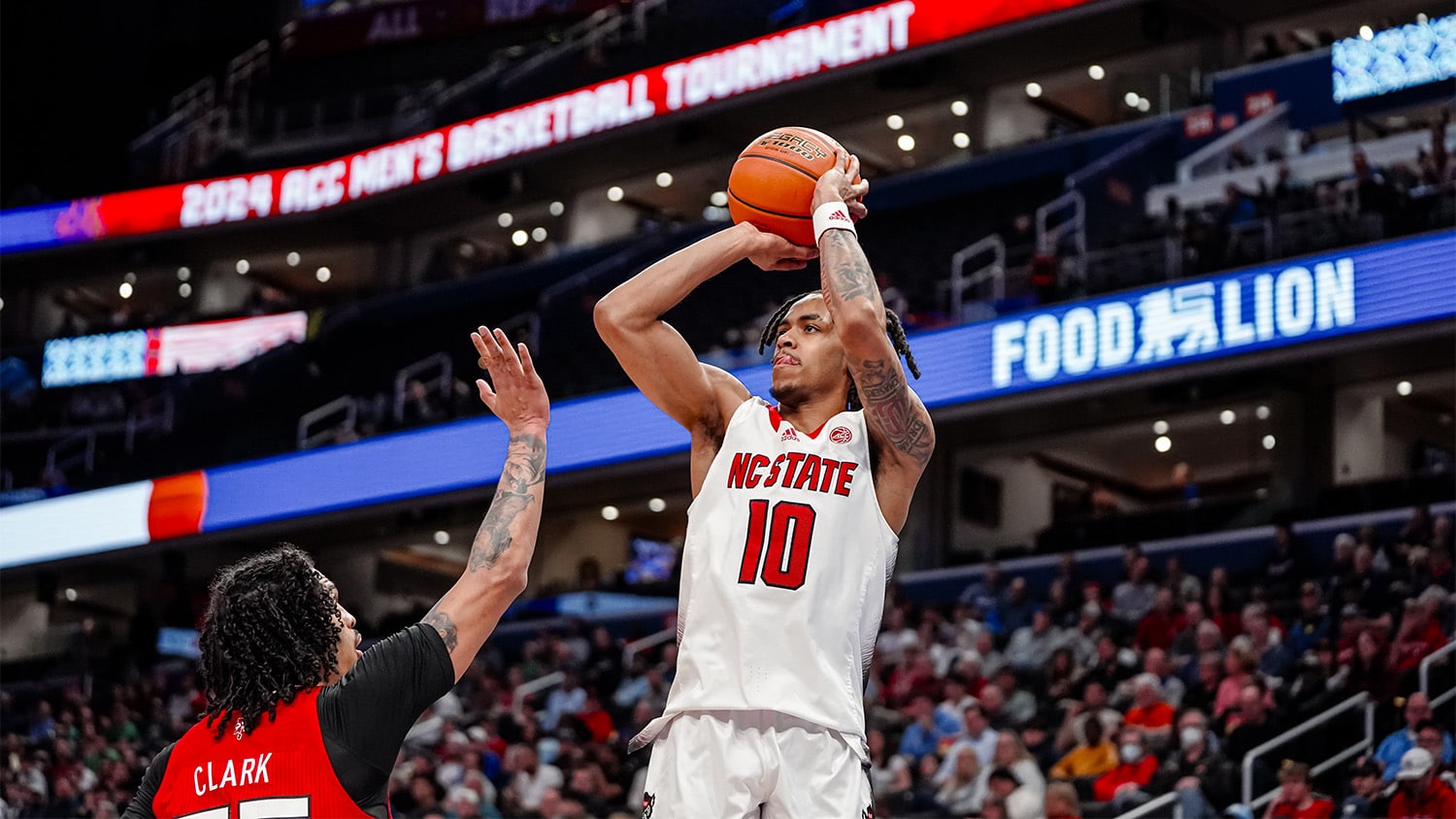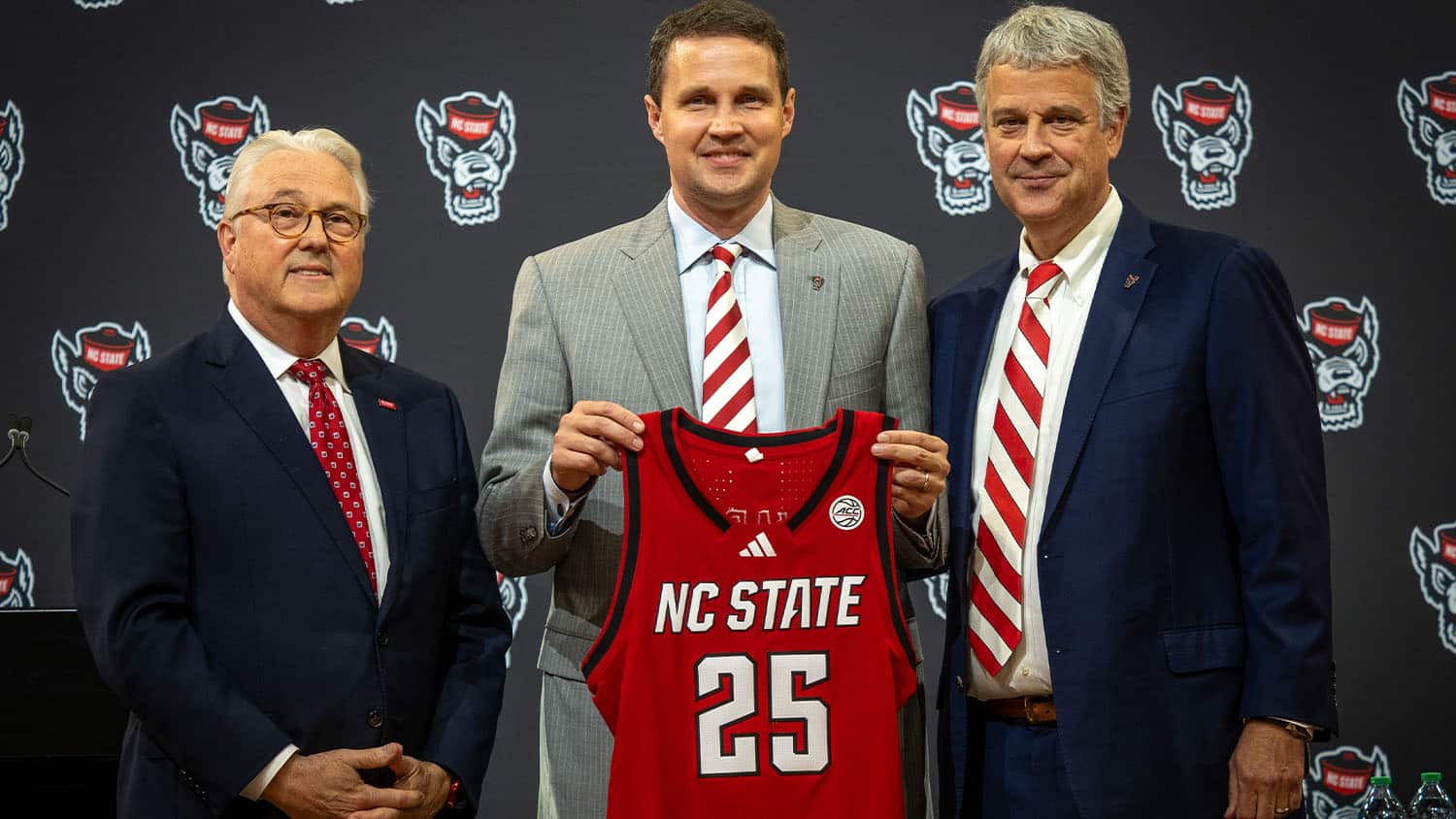Women’s Basketball Grew Up Here
NC State’s women’s basketball team heads to the Final Four for the second time in program history this weekend, ready to play South Carolina in the national semifinals in Cleveland.
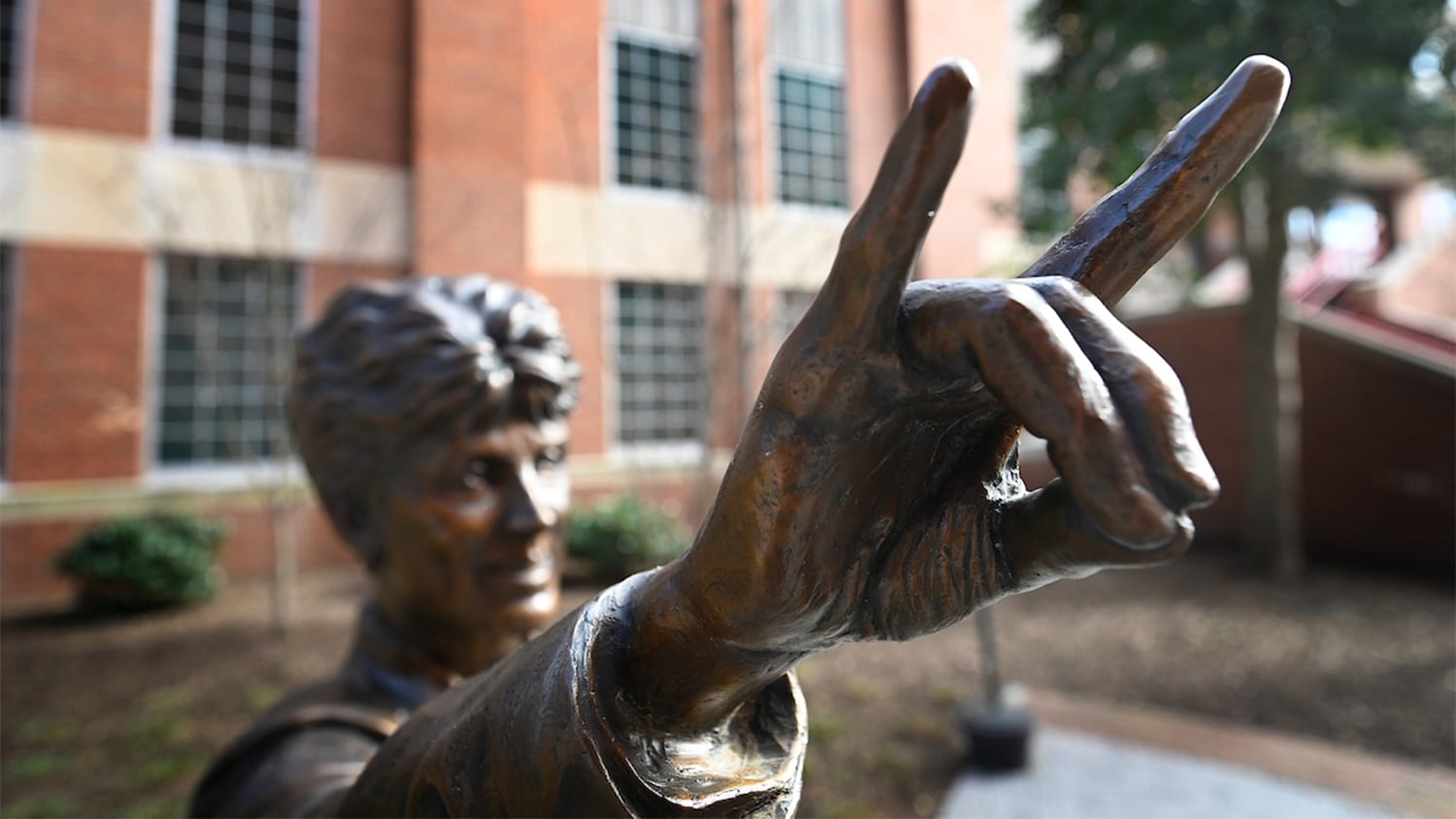
NC State women’s basketball was born on campus 50 years ago and nurtured to good health by Hall of Fame coach Kay Yow during her 35 years leading the Wolfpack.
Now, one of Yow’s successors and successful lieutenants, Wes Moore, has the Wolfpack women in practically unchartered territory, back at the NCAA Championship Final Four for the first time since Yow’s team went in 1998.
He and others can point to the key moment women’s basketball grew up: Jan. 12, 1991.
On that day, at NC State’s Reynolds Coliseum, the sport matured into a nationally prominent attraction instead of a growing understudy to gain an identity apart from the men’s version of the game.
It featured two great teams, No. 2 Virginia and No. 3 NC State, two Hall of Fame coaches in Yow and Cavaliers coach Debbie Ryan and the two best players of their generation, NC State’s Andrea Stinson and Virginia’s Dawn Staley. The winner was set to become the No. 1 team in the country because top-ranked Penn State had lost earlier in the day.
That afternoon, NC State’s campus was rocking, much in the same way the current community has celebrated having its men’s and women’s teams advance to the final weekend of the 2023-24 seasons. State’s third-seeded women play top-seeded South Carolina Friday in Cleveland, while the 11th-seeded men play top-seeded Purdue in Glendale, Arizona, on Saturday.
A total of 11,520 fans — the largest number to ever see an ACC women’s game at that point — showed up to see the statement game after Yow led a statewide marketing campaign to fill the famous arena, where more fans had seen basketball games than any other on-campus facility in the nation.
The game wasn’t nationally televised, however, limiting viewers to a regional audience for what Ryan called “one of the greatest games in the history of our sport.” It was eventually shown as a late-night replay on cable network ESPN.
“It proved that we’re worth seeing, that we can play, that we can execute,” Yow said. “You’re not going to be disappointed by quality women’s teams.”
No one in the arena that day was disappointed, as the two teams slugged it out in triple overtime, with Virginia winning 123-120, setting a record for the most combined points in a women’s college game and the most points ever scored by a losing team.
“Women’s basketball has arrived,” Ryan declared afterwards, with Yow echoing those sentiments. “We deserve coverage on television and in the media.”
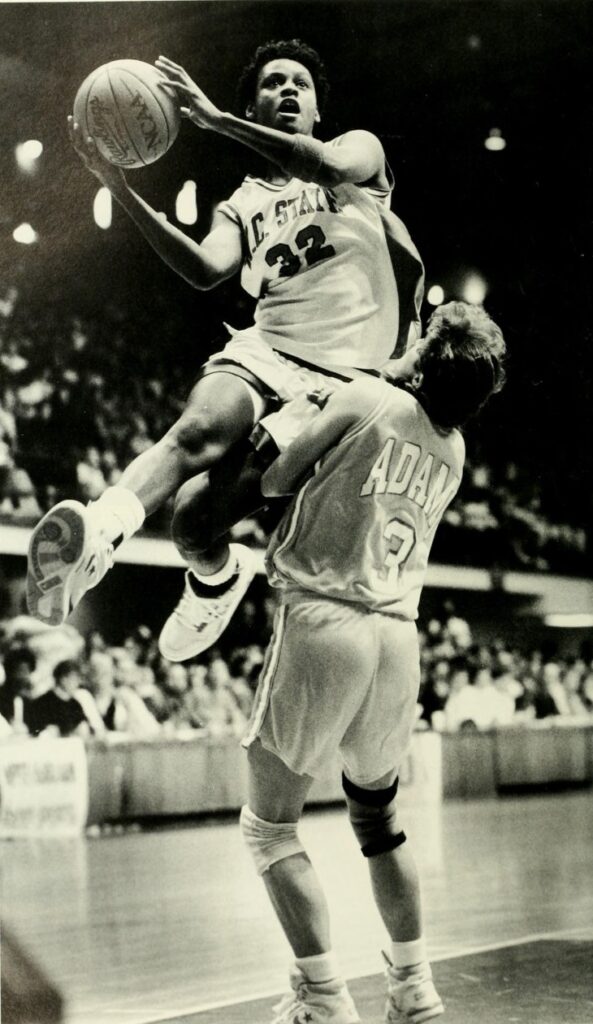
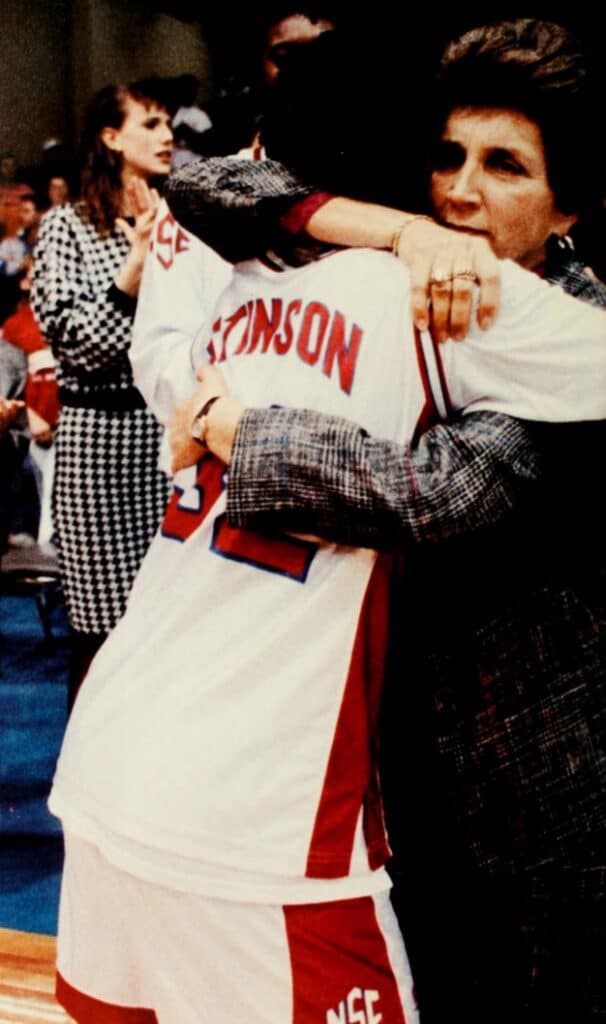
Amazingly, several of the most important figures in the sport now were in the jam-packed home of the Wolfpack that afternoon in 1991. Moore, three years before he became an assistant on Yow’s staff, brought his team from Tennessee’s Maryville College to see what kind of a stage women’s basketball might possess.
Future Wolfpack star Chasity Melvin, leader of State’s 1998 Final Four team, was in the stands as a high school recruit, attending her first ever game in Reynolds Coliseum.
And Staley, now the head coach of the South Carolina team that Moore and the Wolfpack will face Friday in Cleveland, was Virginia’s star player, making her mark on the college game by posting the first triple double in ACC history, with 24 points, 10 rebounds and 11 assists.
Stinson, the senior guard from Huntersville, North Carolina, nearly joined Staley with 24 points, 10 rebounds and nine assists.
“That game is when we began to get women’s basketball where it is now,” says Stinson. “It was just an amazing, exciting game. The crowd was just so big. We had never played in front of anything like it.
“We were two of the top teams in the country, competing on the kind of stage we always dreamed of.”
State led by as many as 20 points in the second half of regulation, but Virginia came back to tie the game and send it into three extra periods, winning on a layup with 2.5 seconds remaining on the clock.
Even though Staley and her team came out on top, Stinson and her teammates went on to win Yow’s fourth ACC championship. Both teams advanced in the NCAA tournament — NC State to the Sweet 16 and Virginia to the national championship game. Both were eliminated by Connecticut, which was just beginning its longtime dominance of the women’s game.
Looking back on it now, Stinson can see that the teams were building something special that will be celebrated on the biggest stage possible this weekend, with big crowds and a global television audience.
“We knew that what we were doing back then was going to allow the game to change,” Stinson says. “We didn’t know how much, we didn’t know to what degree — we just knew it was going to change.
“We knew we could make the game as big as we wanted it to be and as big as the next generation wanted it to be. We were just playing our role in order to pass it down to those who came next.”
Stinson, one of the top players for more than a decade in the WNBA, is now a college coach, as an assistant for both the men’s and women’s teams at Bluefield State University in West Virginia. She will complete her degree in sports communication there later this spring.
Staley, who grew up in the Philadelphia schoolyard footsteps of former Wolfpack All-America Linda “Hawkeye” Page, went on to a successful playing career that included three Olympic gold medals as a player and one as the head coach of Team USA. She’s taken South Carolina to its highest levels, with four Final Four appearances and national championships in 2017 and ’22.
And while the two-time ACC player of the year has plenty of groundbreaking accomplishments in a lifetime devoted to basketball, one of the biggest was facing off against Stinson and the Wolfpack some 33 years ago in Reynolds Coliseum, when two of the best players in the nation faced off with the purpose to win in front of a sellout crowd and to elevate the game they loved.
“I wanted to see basketball go to another level,” Stinson says.
And it did.
- Categories:
